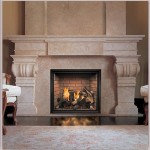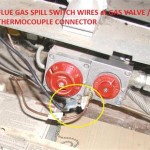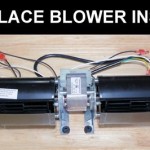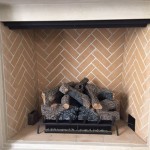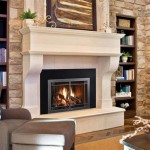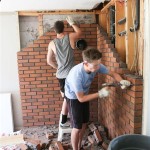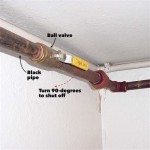Can You Install A Wood Burning Insert In A Prefab Fireplace?
The question of whether a wood-burning insert can be installed in a prefabricated fireplace is a complex one, involving a careful evaluation of safety standards, manufacturer specifications, and local building codes. Prefabricated fireplaces, also known as factory-built fireplaces, are designed and manufactured as complete units, often constructed of metal rather than traditional masonry. Their integration into a home is typically simpler and less expensive than building a traditional masonry fireplace. However, their design characteristics significantly impact the feasibility of installing a wood-burning insert.
A wood-burning insert is a self-contained heating appliance designed to fit inside an existing fireplace. These inserts offer increased heating efficiency compared to traditional open fireplaces, as they are designed to radiate heat into the room and control the combustion process more effectively. This enhanced efficiency makes them an appealing option for homeowners looking to supplement their primary heating system or improve the ambiance of their living space. However, the high temperatures and specific venting requirements associated with wood-burning inserts raise concerns when considering their installation in a prefabricated fireplace.
The primary concern revolves around the potential for overheating and damage to the prefabricated fireplace unit. These units are designed to withstand the heat generated by an open wood fire, which is typically less intense and more readily dissipated than the concentrated heat produced by a wood-burning insert. Additionally, the venting systems of prefabricated fireplaces are often designed differently than those required for wood-burning inserts, creating potential hazards related to flue gas exhaust and the risk of chimney fires.
Therefore, a thorough assessment is required before proceeding with such an installation. This assessment must include a careful review of the fireplace and insert manufacturer’s instructions, a consultation with a qualified professional, and adherence to all applicable building codes and regulations. Failure to properly evaluate these factors could lead to serious safety risks, including fire hazards, carbon monoxide poisoning, and structural damage to the home.
Understanding Prefabricated Fireplace Limitations
Prefabricated fireplaces are engineered with specific limitations in mind, particularly concerning heat tolerance and venting capacity. These limitations are crucial to understand before considering the installation of a wood-burning insert. The materials used in the construction of prefabricated fireplaces, such as lightweight metal fireboxes and insulated chimney components, are designed to withstand a certain level of heat exposure. Exceeding these limits can lead to warping, cracking, or even structural failure of the fireplace unit.
The venting systems of prefabricated fireplaces are also designed to handle a specific volume and temperature of flue gases. These systems often consist of double or triple-walled metal chimneys, which provide insulation and help to maintain proper draft. However, the diameter and construction of these chimneys may not be adequate for the higher temperatures and greater volume of flue gases produced by a wood-burning insert. This can result in inadequate venting, leading to the buildup of creosote, a highly flammable substance, within the chimney. A creosote buildup significantly increases the risk of a chimney fire, which can quickly spread to the surrounding structure of the home.
Furthermore, the clearances to combustible materials surrounding the prefabricated fireplace are critical for safe operation. These clearances are specified by the manufacturer and are designed to prevent the heat from the fireplace from igniting nearby walls, floors, or ceilings. Installing a wood-burning insert can alter the heat distribution pattern and potentially reduce these clearances, creating a fire hazard. Therefore, it is essential to verify that the installation of the insert will not compromise the required clearances to combustible materials.
The UL (Underwriters Laboratories) listing of the prefabricated fireplace is another critical factor. This listing indicates that the fireplace has been tested and certified to meet specific safety standards. Installing a wood-burning insert that is not specifically approved for use with the particular model of prefabricated fireplace can void the UL listing and potentially invalidate the homeowner’s insurance coverage in the event of a fire. Therefore, it is crucial to verify that the insert is compatible with the fireplace unit and that the installation adheres to all manufacturer’s instructions and applicable codes.
Key Considerations Before Installation
Before proceeding with the installation of a wood-burning insert in a prefabricated fireplace, several key factors must be carefully considered. These considerations include compatibility, venting requirements, and professional assessment. Each of these factors plays a critical role in ensuring the safe and efficient operation of the insert and preventing potential hazards.
Compatibility: The most important consideration is the compatibility between the wood-burning insert and the specific model of prefabricated fireplace. Not all inserts are designed for use in all prefabricated fireplaces. The manufacturer of the fireplace unit will typically specify whether or not it is approved for use with a wood-burning insert, and if so, which models are compatible. This information can usually be found in the fireplace’s owner’s manual or by contacting the manufacturer directly. Installing an incompatible insert can compromise the safety of the installation and void the warranty of the fireplace unit.
Venting Requirements: The venting requirements of the wood-burning insert must also be carefully evaluated. Wood-burning inserts typically require a dedicated chimney liner that extends the full length of the chimney. This liner is designed to contain the hot flue gases and prevent them from coming into contact with the existing chimney structure. The liner also helps to improve draft and reduce the risk of creosote buildup. The diameter and material of the liner must be appropriate for the insert and the specific chimney system. Installing an incorrect liner can lead to inadequate venting, increased creosote buildup, and a higher risk of chimney fires.
Professional Assessment: A professional assessment by a qualified installer or chimney sweep is essential before beginning the installation process. A qualified professional can inspect the existing fireplace and chimney system to determine whether it is suitable for a wood-burning insert. They can also identify any potential problems, such as cracks, leaks, or obstructions, and recommend appropriate solutions. The professional can also ensure that the installation complies with all applicable building codes and regulations. This assessment is critical for ensuring the safety and efficiency of the installation.
In addition to these key considerations, it is important to obtain all necessary permits before beginning the installation. Building codes and regulations vary depending on the location, and it is the homeowner’s responsibility to ensure that the installation complies with all applicable requirements. Failure to obtain the necessary permits can result in fines, delays, and potentially the need to remove the insert.
Regulations and Safety Standards
The installation of a wood-burning insert in a prefabricated fireplace is subject to various regulations and safety standards designed to protect homeowners from fire hazards and carbon monoxide poisoning. These regulations and standards are typically enforced by local building codes and fire departments, and they often reference national standards such as those established by the National Fire Protection Association (NFPA) and Underwriters Laboratories (UL).
One of the most important regulations pertains to the proper venting of the wood-burning insert. As previously mentioned, a dedicated chimney liner is typically required to ensure that the flue gases are properly exhausted and to prevent creosote buildup. The installation of the liner must comply with the manufacturer’s instructions and all applicable building codes. The liner must be of the correct diameter and material for the insert and the chimney system, and it must be properly sealed to prevent leaks.
Another critical safety standard relates to the clearances to combustible materials. As previously discussed, prefabricated fireplaces are designed with specific clearances in mind, and installing a wood-burning insert can alter the heat distribution pattern and potentially reduce these clearances. Therefore, it is essential to verify that the installation of the insert does not compromise the required clearances to combustible materials. If necessary, heat shields or other protective measures may be required to maintain adequate clearances.
Carbon monoxide (CO) is a colorless, odorless gas that can be produced by incomplete combustion of wood. High levels of CO can be deadly, and it is essential to take precautions to prevent CO poisoning. All homes with wood-burning appliances should have working CO detectors installed on every level, especially near sleeping areas. The CO detectors should be regularly tested and replaced according to the manufacturer’s instructions. Additionally, the wood-burning insert should be properly maintained and inspected annually to ensure that it is operating safely and efficiently. A qualified professional can inspect the insert and chimney system for any signs of damage or deterioration and recommend necessary repairs or maintenance.
The specific regulations and safety standards that apply to the installation of a wood-burning insert in a prefabricated fireplace can vary depending on the location. It is essential to consult with local building officials and fire departments to determine the applicable requirements and to ensure that the installation complies with all regulations. Failure to comply with these regulations can result in fines, delays, and potentially the need to remove the insert.
In summary, while it may be possible to install a wood-burning insert in a prefabricated fireplace, it is a complex undertaking that requires careful consideration of compatibility, venting requirements, and adherence to all applicable regulations and safety standards. A professional assessment is essential to ensure the safe and efficient operation of the insert and to prevent potential hazards. Homeowners should carefully weigh the risks and benefits of such an installation before proceeding and should always prioritize safety.

New Wood Burning Prefab Fireplaces Complete Fireplace Installs

Time To Replace Wood Burning Prefab Fireplace Greenville Sc Blue Sky

New Wood Burning Prefab Fireplaces Complete Fireplace Installs

Installing Inserts Into Prefab Fireplaces Arlington Tx Black Velvet

Fireplace Installation Full Service Chimney Serving Kansas City Area

Zero Clearance Vs Prefabricated Fireplace Full Service Chimney

Fireplace Inserts Stove Installation Nw Suburbs Of Chicago Il Aelite

Fireplace Install In Winchester Tn Huntsville Al Zero Clearance

All About Prefabricated Fireplaces Chimney Savers

Is It Time To Replace That Old Prefabricated Fireplace
Related Posts

